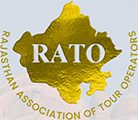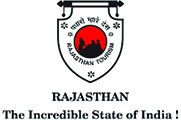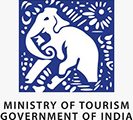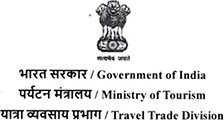Golden Triangle Tour with Ranthambore
The golden triangle tour with Ranthambore offers the best tour services for tourist who will come to visit this first time and having only one week to explore the main attractions of India. This golden triangle with Ranthambore provides the chance to explore all attractions of different places of India like Chandni Chowk and India Gate, Red Fort, Qutub Minar, Humayun Tomb, and some shopping areas.
The golden triangle with tiger safari has the various things for their sightseers to explore and make the trip unforgettable. And the golden triangle tour is one of the best tour packages that will be popular amongst the local and foreign tourists.
If you are hectic from your daily life and want some freshness then you can extend your golden triangle tour with various cities like Khajuraho, Varanasi, Ajmer, Pushkar, and also want to explore wildlife with golden triangle tour then you must choose golden triangle tour with Ranthambore that tour service provides for those people who are wildlife enthusiast.
Cities to Cover Golden Triangle Tour with Ranthambore
- Delhi
- Jaipur
- Agra
- Ranthambore
On arrival, you will be welcomed by our representative at the airport, after which is the transfer to the hotel.
Sightseeing of Old and New Delhi. The sightseeing of Old Delhi begins with a visit to Jamma Masjid, the largest mosque in India. It was built in the year 1650.
This is followed by a drive-past the Red Fort, built during the years 1639-1648, by the Moghol Emperor Shah Jahan, the creator of the famous Taj Mahal.
We later proceed to Raj Ghat, the memorial site dedicated to Mahatma Gandhi, who was cremated here following his assassination in January 1948.
After visiting Old Delhi, we proceed for a sightseeing trip of New Delhi which begins with a drive-past the Safdarjang’s Tomb, built in 1753-54, by the Nawab of Avadh for his father, Safdarajang. It is one the last exemples of Mughal architecture before the final remnants of the great empire collapsed.
We then reach the famous Qutub Minar (construction started in 1193 & completed in 1368). This striking medieval, soaring tower of victory is nearly 73 metres high and has five distinct storeys. Within the Qutub Minar Complex, and amidst the ruins of Quwwat-ul-Islam Mosque, stands the famous Iron Pillar, which has stood the vagaries of centuries and has not rusted at all for nearly 1600 years!!
We then proceed to Humayun’s Tomb (World Heritage Monument), built in the mid-16th century by his Persian-born senior wife, Haji Begum.
We later drive through the Diplomatic Enclave, which houses the Embassies of most of the foreign countries.
We shall make a short stop for a quick photo shoot at the India Gate and the Rashtrapati Bhavan, the official residence of the President of India, which was formerly the domicile of the last Viceroy of India. Finally we shall visit Connaught Place, the main and upmarket shopping area of New Delhi.
After breakfast at the hotel, we drive down to Agra, en route we visit the exquisite ‘Itimad-ud-Daulah’, the tomb of Mirza Ghiyas Baig, the Persian gentleman, who was Emperor Jehangir’s ‘wazir’ or chief minister, and his beautiful daughter, Nur Jahan, later married the Emperor. She constructed the tomb between 1622 and 1628 in a style similar to the tomb she built for Jehangir near Lahore in Pakistan.
Although much less elaborate, many of the Itimud-ud-Daulah’s design elements foreshadow the Taj Mahal, earning it the nickname ‘Baby Taj’.
Upon arrival at Agra, we check-in at the hotel. In the afternoon, we proceed for a city tour to discover the Taj Mahal (Closed on Fridays). Described as the most extravagant monument ever built for love, this poignant Mughal mausoleum has become the ‘de facto’ tourist emblem of India.
The Taj Mahal was built by Emperor Shah Jahan as a mausoleum for his second wife, Mumtaj Mahal, who died in childbirth in 1631. Construction of this edifice built with pure white marble began in the same year and it took 22 years to finish the same. In total, a total of 20,000 people and craftsmen from India and Central Asia worked on the building.
The semi-translucent white marble, the exquisite screens, the fabulous carvings and ‘pietra dura’ inlay work (with thousands of semi-precious stones in beautiful patterns) are the most striking features of this spectacular mausoleum. Despite the effects of pollution and overexposure, a visit to the Taj Mahal is still an overwhelming experience and the monument seems as immaculate today as when it was first constructed.
We then continue our tour with a visit to the Agra Fort, on the bank of the Yamuna river. Construction of this massive red stone fort was begun by Emperor Akbar in 1565 and it was built primarily as a military structure.
The auricular fort’s colossal double walls rise over 20m in height and measure 2.5 km. in circumference. They contain a maze of buildings that form a small city within a city. The most impressive building to survive is the ‘Moti Masjid’ (Pearl Mosque), regarded by some as the most beautiful mosque in India. Other places of importance are ‘Diwan-i-Khas’, ‘Diwan-i- Am’, ‘Musammam Burj’ and Jehangir’s Palace.
After breakfast at the hotel, we drive down to Ranthambore, but en route we stop over at Fatehpur Sikri: This magnificent fortified ghost city was the capital of the Mughal Empire between 1571 and 1585, during the reign of Emperor Akbar. Although brilliant from an architectural point of view, Akbar’s city was erected in an area that was plagued by water shortages and it was abandoned shortly after Akbar’s death because of this.
Fatehpur Sikri’s beautiful and magnificent Jama Masjid (now brilliantly restored) is said to be a copy of the mosque at Mecca. The main entrance is through the impressive 54 metre-high Buland Darwaza (Victory Gate), considered as the tallest gateway in the world. It was constructed to commemorate Akbar’s victory in Gujarat.
In the northern part of the courtyard is the superb white marble ‘dargah’ or tomb of the sufi saint Shaikh Salim Chisti, who Akbar credited with bringing him a heir. The carved marble lattice screens (‘jalis’) are probably the finest examples of such work you will see anywhere in the country.
This amazing courtyard has many other wonders, such as the Palace of Jodh Bai, Birbal Bhavan, Panch Mahal and of course, Diwan-i-Khas (The Hall of Private Audiences) and ‘Diwan-i-Am’ (The Hall of Public Audiences). All these structures reflect the glory and the grandeur of the Mughal Empire.
Abhaneri, situated about 162 kms. from Ranthambore. This little village has one of Rajasthan’s most awesome ‘baoris’ (= stepwells). It is around 30 meters deep and among the largest stepwells in India. It not only stores water but is also very effective for groundwater harvesting. This stepwell, famous for its distinctive construction and a truly unique design, is one-of-a-kind and considered as the most picturesque in the world, which therefore naturally attracts a lot of attention from the visitors. Upon arrival at Ranthambore, we check-in at the hotel.
Ranthambore National Park, situated near the town of Sawai Madhopur, mid-way between Bharatpur and Kota. This park is one the prime examples of Project Tiger’s conservation efforts in Rajasthan.
The Park covers an area of about 1334 sq. km. and it is home to the famous Bengal tigers, leopards, bisons, deer, crocodiles and other exotic, wildlife fauna.
You can look forward to an exciting jungle safari that could be planned for morning & late afternoon.
Ranthambore is very scenic and it is blissfully located in a truly idyllic and natural environment. A system of small lakes and rivers is hemmed-in by steep, high crags and on top of one of these hills, is the imposing and yet charming Ranthambore Fort, built in the 10th century AD. The lower ground alternates between open bushland and fairly dense forest and is peppered with ruined pavilions and ‘chhatris’ (=domed kiosks). This area was formerly a preserve and hunting-ground of the Maharajas and members of the royal entourage.
Other places of interest in this park are the ‘Ganesh Mandir’, a temple dedicated to the elephant-headed deity, Ganesh (the elder son of Lord Shiva), as well as ‘Padam Talao’, a serene and beautiful lake which is known for its abundance of water lilies.
[The park is open only during the months of March-June and October-February. It remains closed, for three months, during the monsoon period of July-September].
After breakfast, we shall proceed from Ranthambore to Jaipur. Upon arrival, we check-in at the hotel or After lunch, we proceed for a tour of the city’s iconic structures. First comes the Jantar Mantar, a magnificent stone observatory, built by Raja Jai Singh in 1728 known for his passion for astronomy. The Jaipur observatory is the largest and best preserved of the five he built, the other four being in Delhi, Varanasi, Ujjain and Mathura.
Later in the evening, we have lined up for you a unique experience of culinary delights and live-preparation of traditional Rajasthani dishes. If you wish, you could even try your hands at rolling a ‘chappati’, (also called a ‘roti’), made of wheat flour, the traditional staple food of northern India, or preparing a regional vegetable curry. You also have an option of a photo-session with an entire group of family members, all attired in typical and traditional Rajasthani costumes.
After breakfast, we proceed on an excursion to Amber Fort which is located about 12 kms. from Jaipur. It was the ancient capital of the Kachhwaha Rajput rulers. This unique wonder is a must on every tourist itinerary of Rajasthan. Construction of the fort-palace was begun in 1592 by Maharaja Man Singh, the Rajput commander of Akbar’s army. It was later extended by the Jai Singhs, before they moved their capital to Jaipur.
The fort is a superb example of Rajput architecture, stunningly situated on a hillside and overlooking a lake. You will really cherish the ascent to the Palace on the back of brightly caparisoned elephant. We shall visit the multiple chambers and the hallways of this Palace which are famous for their designs and decorations.
. First comes the Jantar Mantar, a magnificent stone observatory, built by Raja Jai Singh in 1728 known for his passion for astronomy. The Jaipur observatory is the largest and best preserved of the five he built, the other four being in Delhi, Varanasi, Ujjain and Muttra.
We then visit the opulent City Palace, the former Royal residence, built in a blend of Rajasthani and Mughal style. The Palace contains fabulous museums displaying an excellent collection of miniature paintings, traditional costumes and armory.
Later, we drive past the intriguing Hawa Mahal (Palace of the Winds), which is one of Jaipur’s major landmarks. Constructed in 1799, this five-storey building is a stunning example of Rajput artistry. It was originally built to enable ladies of the royal household to watch the everyday life and processions of the city.
After Breakfast, At the end of this visit, we return to Delhi. You have the time to refresh yourself after which dinner will be served. We then leave to arrive at the Delhi International Airport to catch your flight back to your country.
We thank you profoundly for availing our services and we hope that you were satisfied with our commitment of providing the best care and attention to you, our honoured guests.
We would like to believe that this visit was a wonderful vacation and we are certain that you will carry back cherished memories for a lifetime.
Quick Enquiry
Need Help ?? Contact us..!!
Mail Us
info@rajasthantourismbureau.com
Call Us
+91-9928026027 / +91-141-6783026
For details or any other query please contact below :
How It Works
- Choose from our curated tour packages designed around diverse interests and destinations, or create a custom travel itinerary for a journey that's uniquely yours.
- Once we receive your email, you can expect a prompt response within 24 hours, complete with a detailed itinerary tailored to your preferences and needs.
- Enjoy the convenience of secure online payment, or choose to pay upon arrival—whichever option best fits your preferences and travel plans.
- 5000+ Completed Tours with happy Clients
- 25+ Years of experience
- Globally Recognized As best Tour Operator





